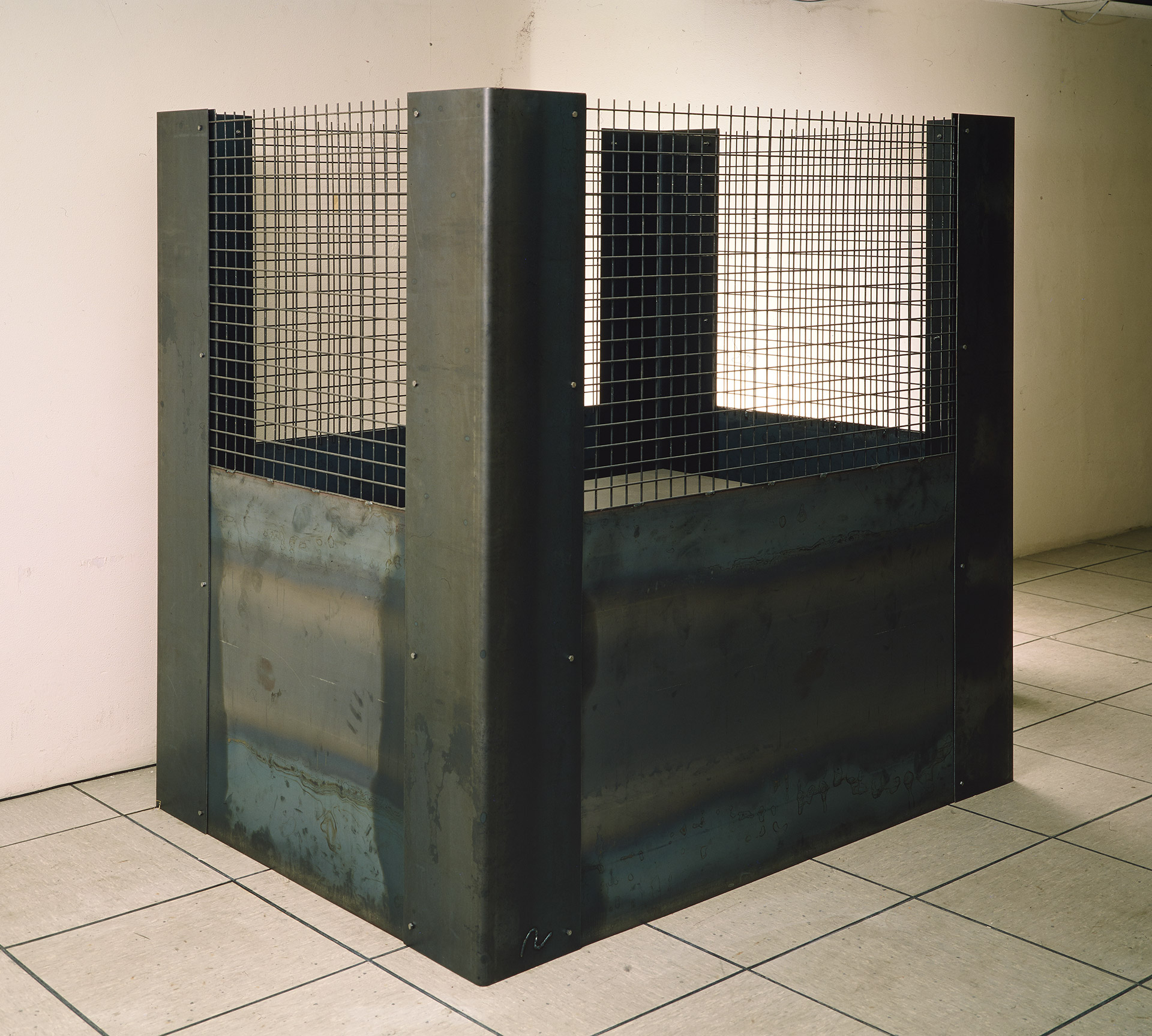
Susana Solano (Barcelona, 1946)
Don't Go Too Far no. 3
1989
WORK INFORMATION
Iron, 200 × 203 × 159 cm
OTHER INFORMATION
Signed on the side: "S".
Susana Solana was trained as a painter in Barcelona, but in the early 1980s she became interested in using other materials, shifting her creative activity from the picture plane to three-dimensional space and thus making her work sculptural. By that time, sculpture had ceased to be the art of carving and modelling to become a fertile field of experimentation with novel materials and techniques that opened up an infinite range of hitherto unsuspected possibilities. As American art historian Rosalind Krauss explained, the field of sculpture had expanded so much that the term no longer had a concrete meaning and "rather surprising things [had] come to be called sculpture". The surprises offered by sculpture in the 1980s were a consequence of its approximation to abstraction, on the one hand, and to the world of objects on the other, allying itself with a wide variety of building materials that held out immense possibilities. While other artists made excessive use of those surprising possibilities and became sidetracked, Solana found in certain materials, such as iron, the perfect expressive vehicle for grounding her ideas and developing her art.
Her artistic evolution ran parallel to the paths travelled by sculpture in the final decades of the 20th century, for Solana's personal odyssey has taken her from the reproduction of figurative objects still closely related to painting, such as Patena de transit XV [Transient Patina XV], to the recreation of minimalist objects, leading to a conception of the sculptural where the real space in which the piece is inserted is just as important as the work itself, if not more so, as exemplified by No te pases n.º 3 [Don't Go Too Far no. 3].
The small piece entitled Transient Patina XV, a flat tray-like piece with a border that recalls the frame of a window or picture, illustrates Solana's transition from the world of painting to the field of sculpture. The other work, Don't Go Too Far no. 3, is a rectangular three-dimensional box made of opaque sheet metal and steel mesh. Both materials have been welded, as if the artist had intended to build an industrial piece, but the outcome is ambiguous: although it reveals a working knowledge of the techniques employed to make it, the end result serves no visible purpose. It is, to put it more crudely, a useless object. However, artistic practice since Marcel Duchamp has taught us to find new meanings in objects that seem less suited to aesthetic contemplation. [Javier Maderuelo]

